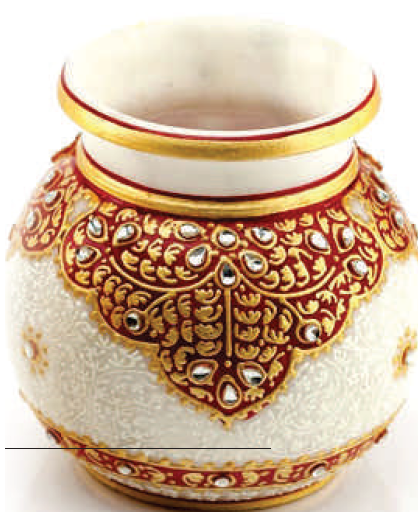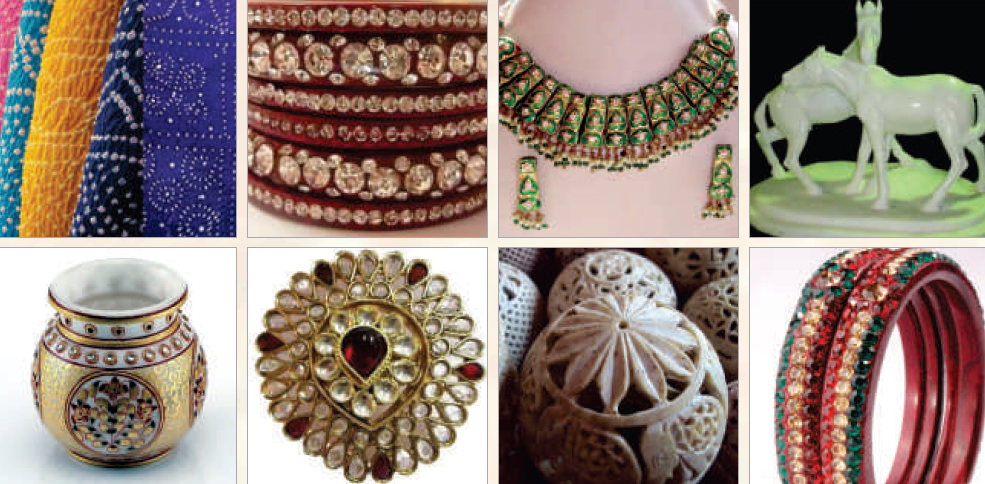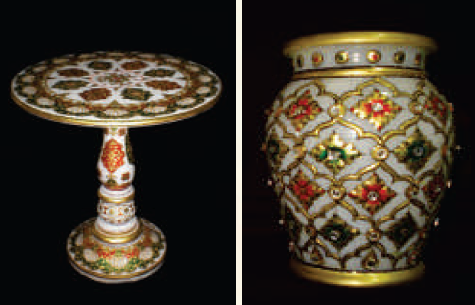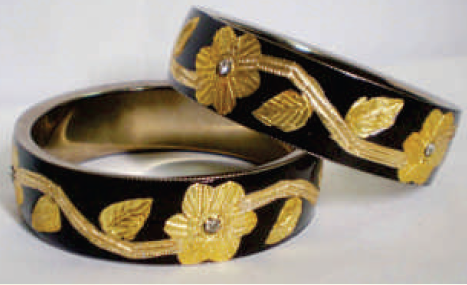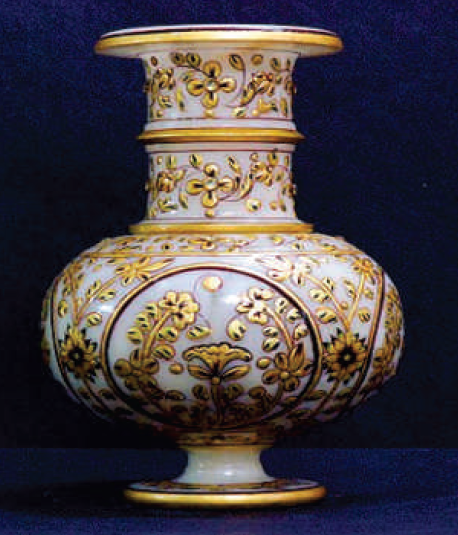Rajasthan: handicrafts
| Line 9: | Line 9: | ||
|} | |} | ||
| − | [[Category: India | | + | [[Category: India |W]] |
| − | [[Category: Communities | | + | [[Category: Communities |W]] |
[[Category:Name|Alphabet]] | [[Category:Name|Alphabet]] | ||
[[Category:Name|Alphabet]] | [[Category:Name|Alphabet]] | ||
Revision as of 17:24, 10 April 2014
This is a collection of articles archived for the excellence of their content. Readers will be able to edit existing articles and post new articles directly |
The warp and weft of communal harmony
India Harmony Volume - 1 : Issue - 3 April, 2012
Royal patronage in the past with special incentives to artists and artisans has nurtured a thriving crafts industry in Rajasthan. Jaipur the capital of the state is known as the craft capital of the country. And the soul of this craft lies in a binding and timeless amity between communities – especially Hindus and Muslims.
Highly stylised motifs and patterns of bandhej or the tie and dye textiles in brilliant shades, popularly known as the art of royalty is one of the most famous industries of Jaipur. This art and industry nurtured by the Maharaja of Jaipur, weaves Hindus and Muslims together, as they create spectacularly beautiful textiles.
The dexterity and the creativity that goes on to make the tie and dye textiles are marvellous. Laheriyas or the delicately created patterns in waves are dyed mostly in Udaipur, Jodhpur and along with this there are panchranga or five-coloured bandhej on sarees, odhnis or turbans. Kota in Rajasthan is famous for its self-checked weave cotton. Block printing is another form of craft, which has developed as a small-scale industry in the state. Old centers of this craft are Barmer which is known for the unique ajrakh prints while Jaipur, Sanganer and Bagru emphasize more on the stylized Mughal inspired blocks like paisley and floral motifs. Chittor is known for its jajam prints. The handprints of cotton are known for their motifs in bright colours. It is not only colourful but an ecofriendly form of printing on textiles. Fabrics are printed with the help of wooden blocks and vegetable dyes.
The embroideryof Rajasthan varies from community to community which has its own style. The Jat women of Sikar and Jhunjhuna make designs of flora and fauna on the border of their skirts. The Jat women of Bikaner are famous for bandhini. The Phulkari bagh stitch is more common among the Meos of Alwar district. The appliqué works of Rajasthan also have a distinct appeal. They are done on quilts called rallies. The pichwai of Nathdwara is a designer cloth, which is used as a decoration in temples. The gota work is a type of embroidery, which is done on velvet cloth which also another variety of embroidery.
Similarly, the ubiquitous Rajasthani 'safa' or turban in brilliant shades is a product created by people of both communities working together in Jaipur. And during weddings, as well as festive occasions, the majestic headgear notches up big sales. The centuries' old marble industry of Kishangarh is a huge grosser and here too one finds a harmony that makes the industry famous across the world.
Lac jewellery, also known as lacquer jewellery, originated in Rajasthan and has is immensely popular. Lac jewellery set with glass chatons is very popular in Rajasthan and Jaipur city is the big centre for it. The bangles are worn on all auspicious occasions by the Hindus in Rajasthan as they are considered a sign of good omen, but very few people know that it's mostly the Muslim community in the state which makes the bangles glitter.
The beautifully coloured bangles may be either plain or in various attractive designs. A good chunk of the jewellery is, which in turn provides more employment and inspires improvisation in design and pattern of jewellery.
Jaipur is also known as the 'gem city' and is famous all over the world for its gemstones master cutters, polishers and gemstone dealers and for its cut and polished emeralds. It is also a world leader in semi-precious stones and Kundan (the art of setting precious stones in gold) - Meena (the art of enameling on gold or silver) jewellery. Making different forms of jewellery items is also another form of craft. The `kundan` and `jadau` jewelry have uncut precious gems fixed on the twenty-four carat gold ornaments like necklace, rings and earrings. Enamellings or `minakari` work is a form of jewellery craft where the piece is fixed on a stick of lacquer and delicate floral designs engraved on it. The etchings are made in groves and the enamel colours are filled inside intricate miniature paintings. The `kundan` craft of Jaipur a part of the Mughal jewellery which has uncut stones set in open lacy gold work. The hollow portions of the ornament in which the stones are set are filed with gold of pure quality. In `jadau` the kundan style and the minakari technique is amalgamated to produce a different kind of design. Jadau is actually, gems in front and superb enamelwork on the reverse.
Besides these, glazed blue pottery with its origin in Persia, hand block printed textiles, stone craft marble and sandstone articles and traditional miniature paintings available in Jaipur are also in huge demand.. Tourists are also often found shopping for 'jootis' (traditional Rajasthani moccasins) and 'kathputlis' (puppets). It is one huge crafts bazaar for a huge range of goods - from jewellery and brass work to textiles, from blue pottery to woodwork and many more. One can visit Sanganer Village for hand-made paper, block printing and blue pottery.
Similarly, Kishangarh is known as the marble city of India and different types of marble handicraft are made here that are sold both in the domestic and foreign markets. And the glue that binds the industry together and is responsible for its success is harmony between the Hindu and Muslim workers.
Alwar is known for its sheer body pottery known as kagzi or paper pottery. The pots of Pokhran have geometrical patterns embossed on it. The painted pottery of Bikaner is painted with lac colours to which a shade of gold is added. Nohar in Bikaner is the hub of pottery. The blue pottery of Jaipur is produced without the use of clay. It is made up of quartz, raw glaze, sodium sulphate, multani mitti which are baked on fire only once unlike the conventional way of pot making. The neck and the lip are shaped on the wheel. The decorating on the pot is done with brushes made of squirrel`s hair and mostly decorated with arabesque patterns, occasionally with animal and bird motifs.
The list of crafts in Rajasthan is endless and one of the famous crafts of the state is the leather items. Mojdis or leather footwear is made from locally tanned leather, which is then decorated with metals or beads. Bikaner is known for making a leather bottle out of the camel hide called kopi. Bikaner is famous for decorative saddles for horses and camels. The region is also adept in making beautiful lamp and lampshades out of leather.
